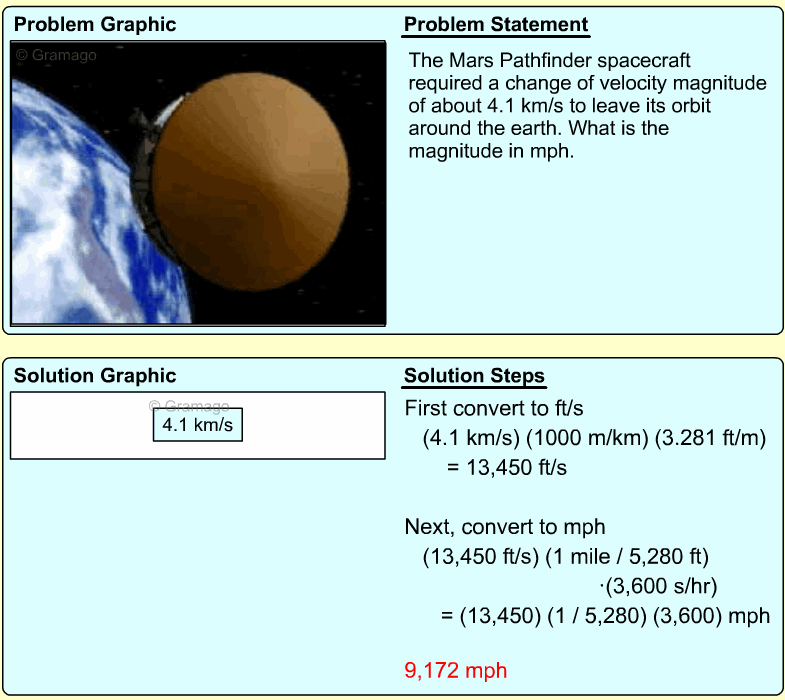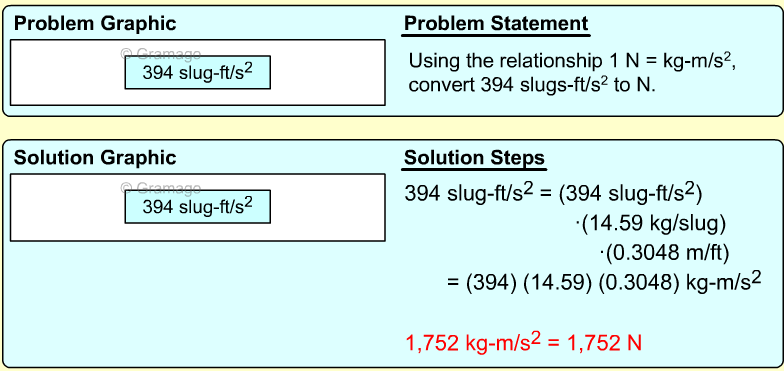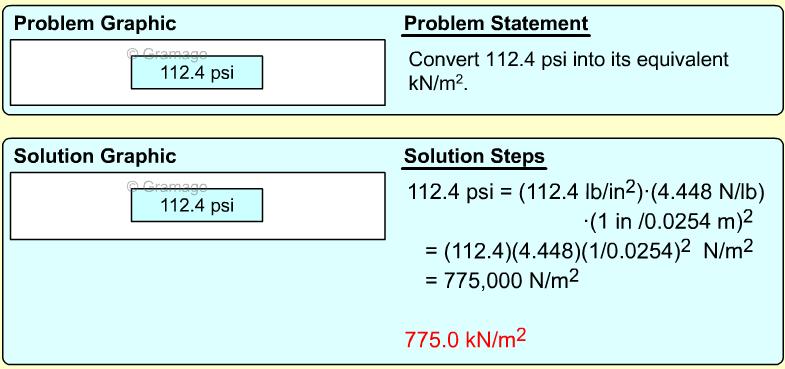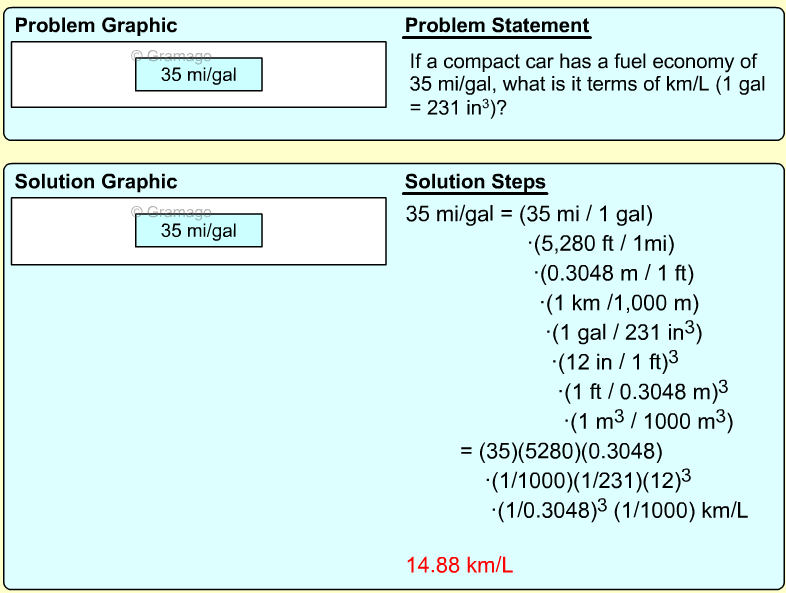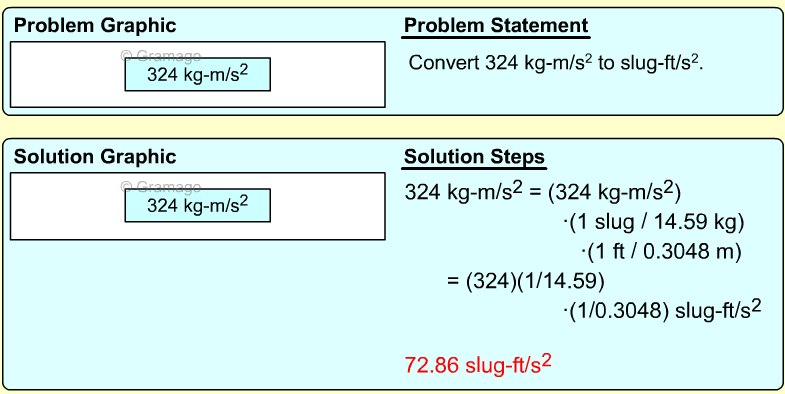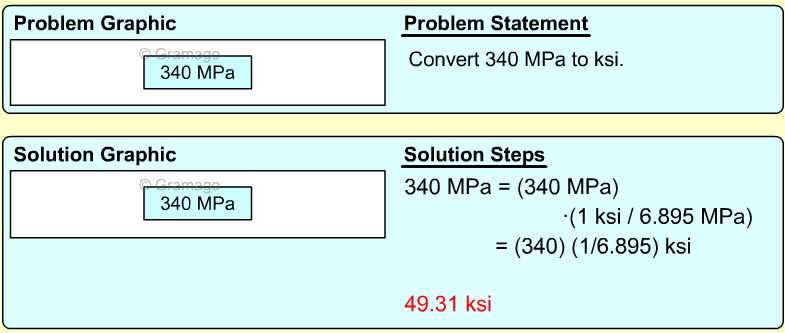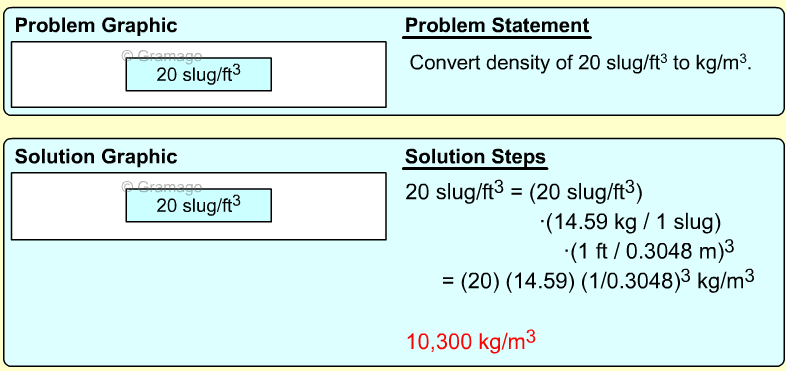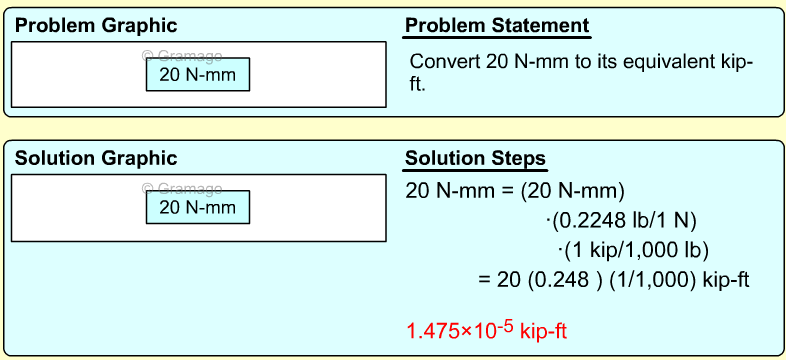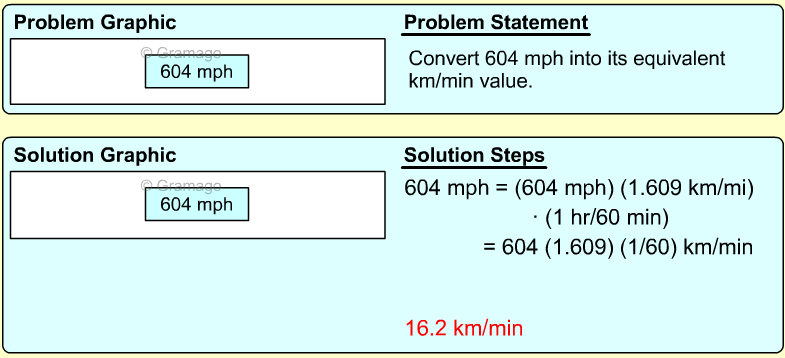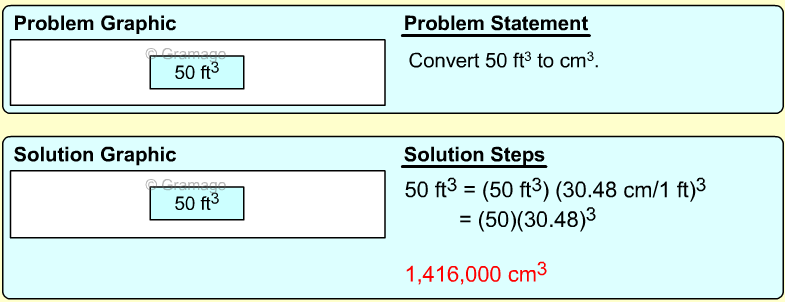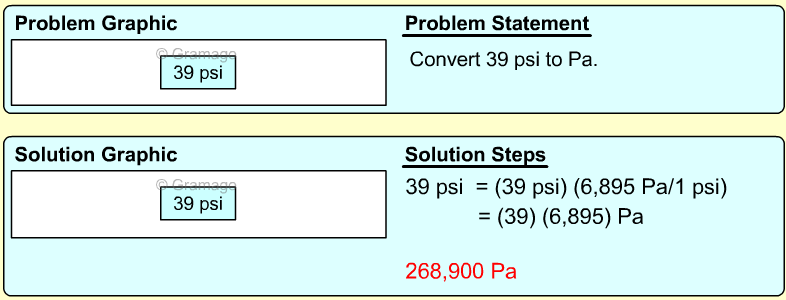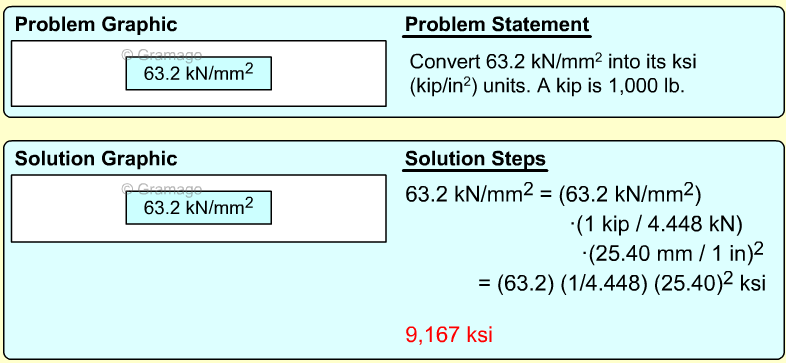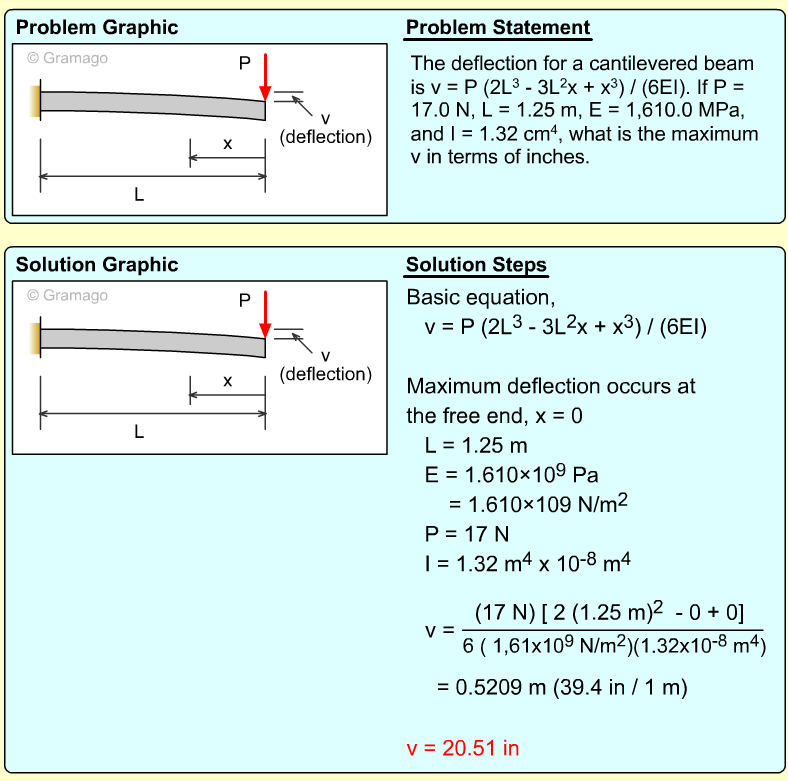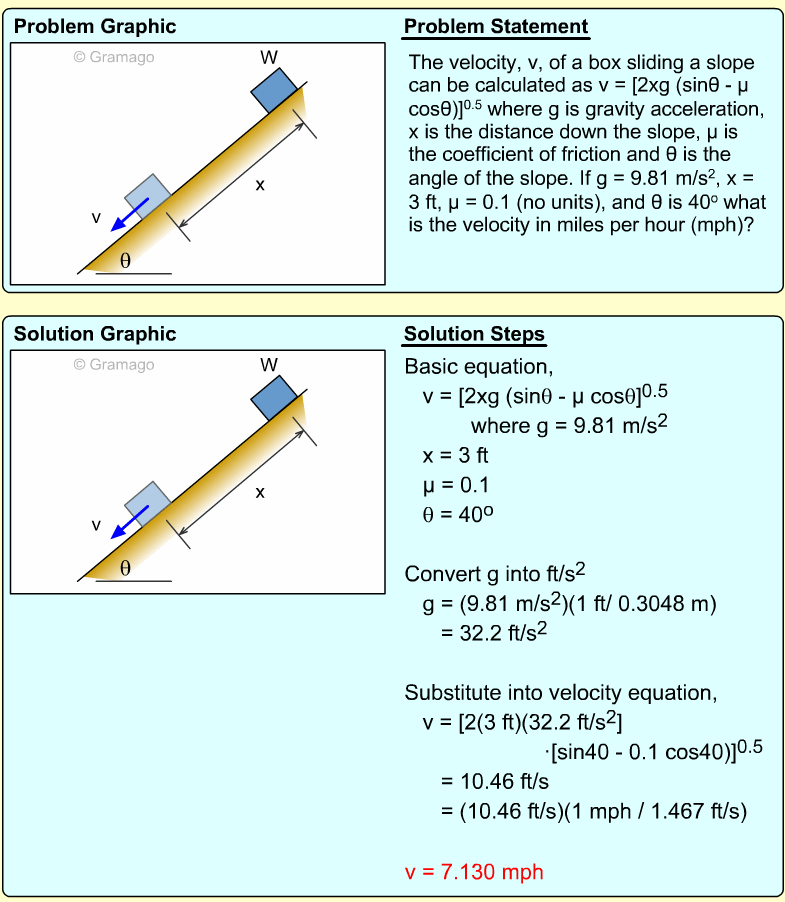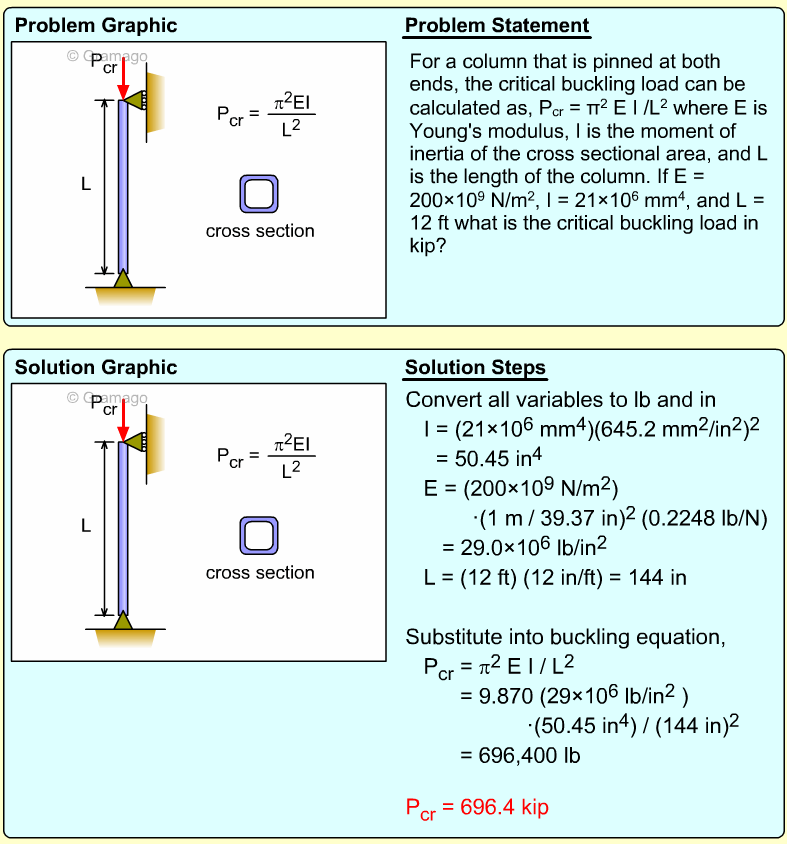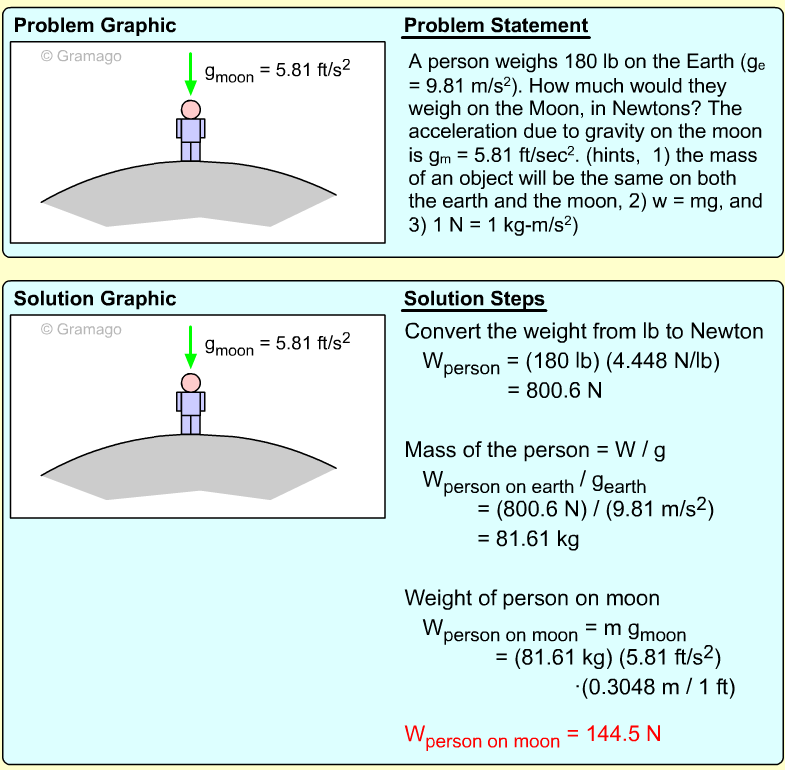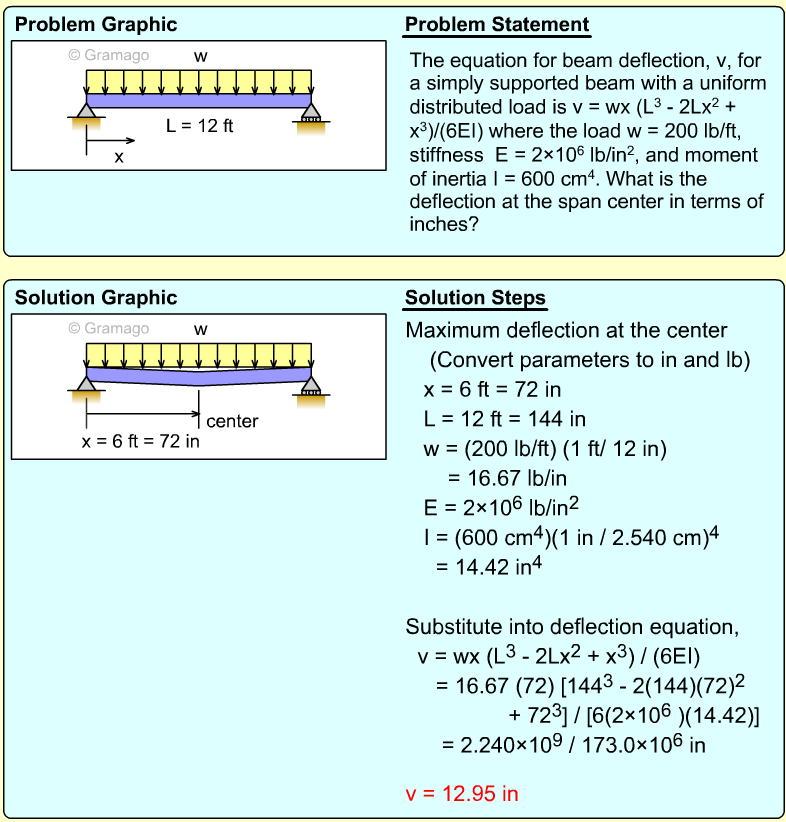| Ch 1. Basics | Multimedia Engineering Statics | ||||||
| Problem Solving | Units | ||||||
| Units | Case Intro | Theory | Case Solution | Example |
| Chapter |
| 1. Basics |
| 2. Vectors |
| 3. Forces |
| 4. Moments |
| 5. Rigid Bodies |
| 6. Structures |
| 7. Centroids/Inertia |
| 8. Internal Loads |
| 9. Friction |
| 10. Work & Energy |
| Appendix |
| Basic Math |
| Units |
| Sections |
| eBooks |
| Dynamics |
| Fluids |
| Math |
| Mechanics |
| Statics |
| Thermodynamics |
| ©Kurt Gramoll |
|
|
||
| Example |
||
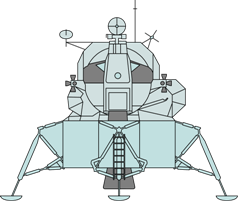 |
A lunar lander module has a mass of 250 slugs on earth. Calculate (a) its mass in SI units, and (b) its weight in SI units. If the module lands on the moon, where g is 5.30 ft/s2, determine (c) its weight in SI units, and (d) its mass in SI units. Calculate all the answers to four significant digits. Recall the gravitation constant, g, is 9.807 m/s2 (32.17 ft/s2) on the earth's surface (average) and 1.622 m/s2 (5.321 ft/s2) on the moon's surface (average). |
|
| Solution |
||
Units table in the appendices can be used for this example. From that table 1, slug is equal to 14.59 kg. a) 250 slugs (14.59 kg / 1 slugs) The final answer is expressed with four significant digits. Weight is mass multiplied by the acceleration due to gravity (W = mg). In SI system g is 9.807 m/s2 b) W = 3,647.5 kg (9.807 m/s2) |
||
|
When the module is on the moon, g is 5.321 ft/s2. Its weight can be found by multiplying the mass by the gravitational acceleration (both in US units) c) Wm = mgm = 250 slugs (5.321 ft/s2) To convert the final answer to SI unit, the units table from the appendix can be used again. 1 lb is 4.448 newton. (Please note that the final answer needs to be expressed in four significant digits) 1,330 lb (4.448 N / 1 lb) The same result can be found by multiplying the weight on earth by the ration of gravitational accelerations. Wm=We (gm / g) d) The mass is independent from the gravity and will remain constant. |
|
| Example Problem 1 |
||
|
||
| Example Problem 2 |
||
|
||
| Example Problem 3 |
||
|
||
| Example Problem 4 |
||
|
||
| Example Problem 5 |
||
|
||
| Example Problem 6 |
||
|
||
| Example Problem 7 |
||
|
||
| Example Problem 8 |
||
|
||
| Example Problem 9 |
||
|
||
| Example Problem 10 |
||
|
||
| Example Problem 11 |
||
|
||
| Example Problem 12 |
||
|
||
| Example Problem 13 |
||
|
||
| Example Problem 14 |
||
|
||
| Example Problem 15 |
||
|
||
| Example Problem 16 |
||
|
||
| Example Problem 17 |
||
|
||
| Example Problem 18 |
||
|
||
| Example Problem 19 |
||
|
||
| Example Problem 20 |
||
|
||
| Example Problem 21 |
||
|
||
| Example Problem 22 |
||
|
||
| Example Problem 23 |
||
|
||


